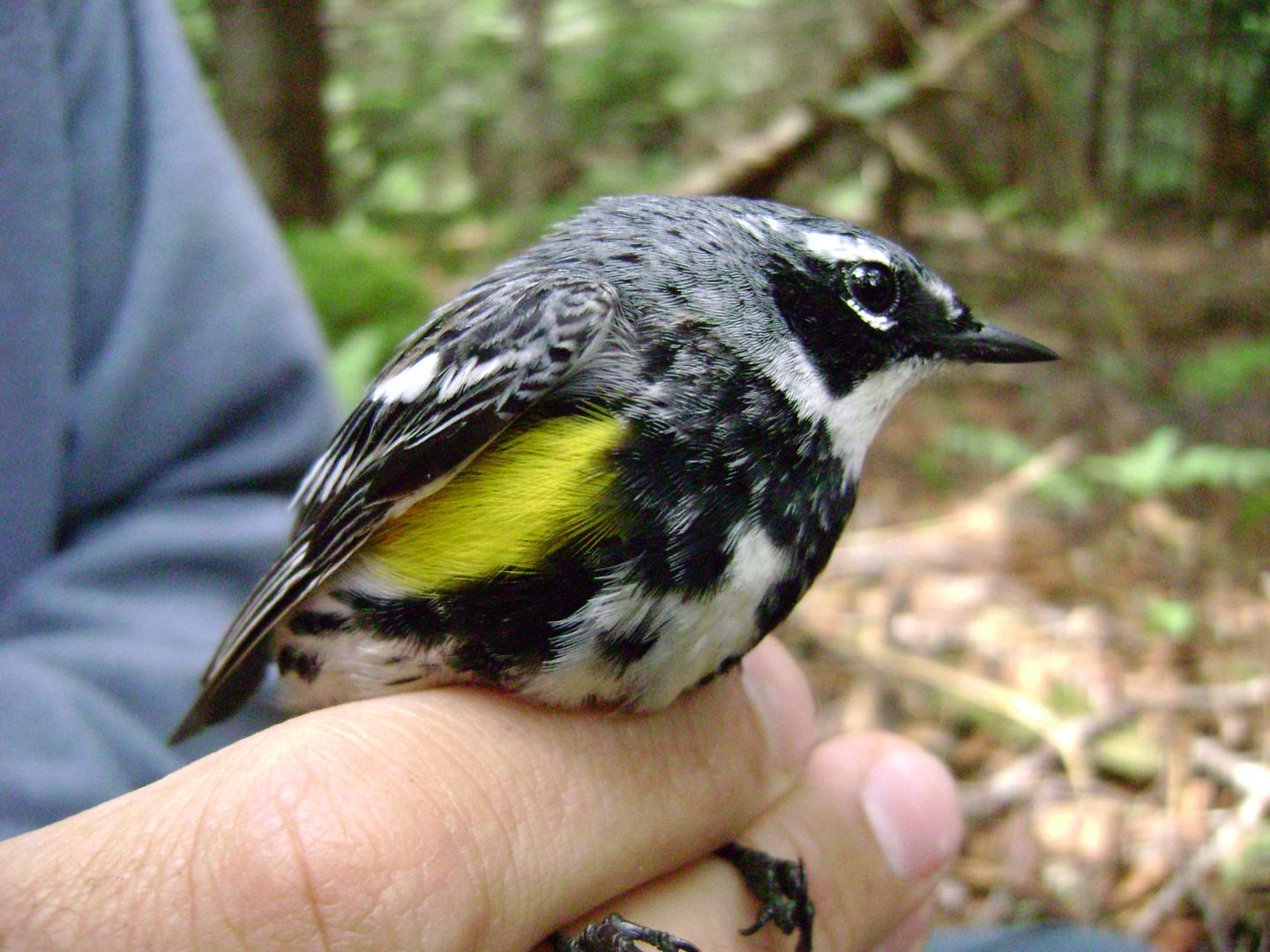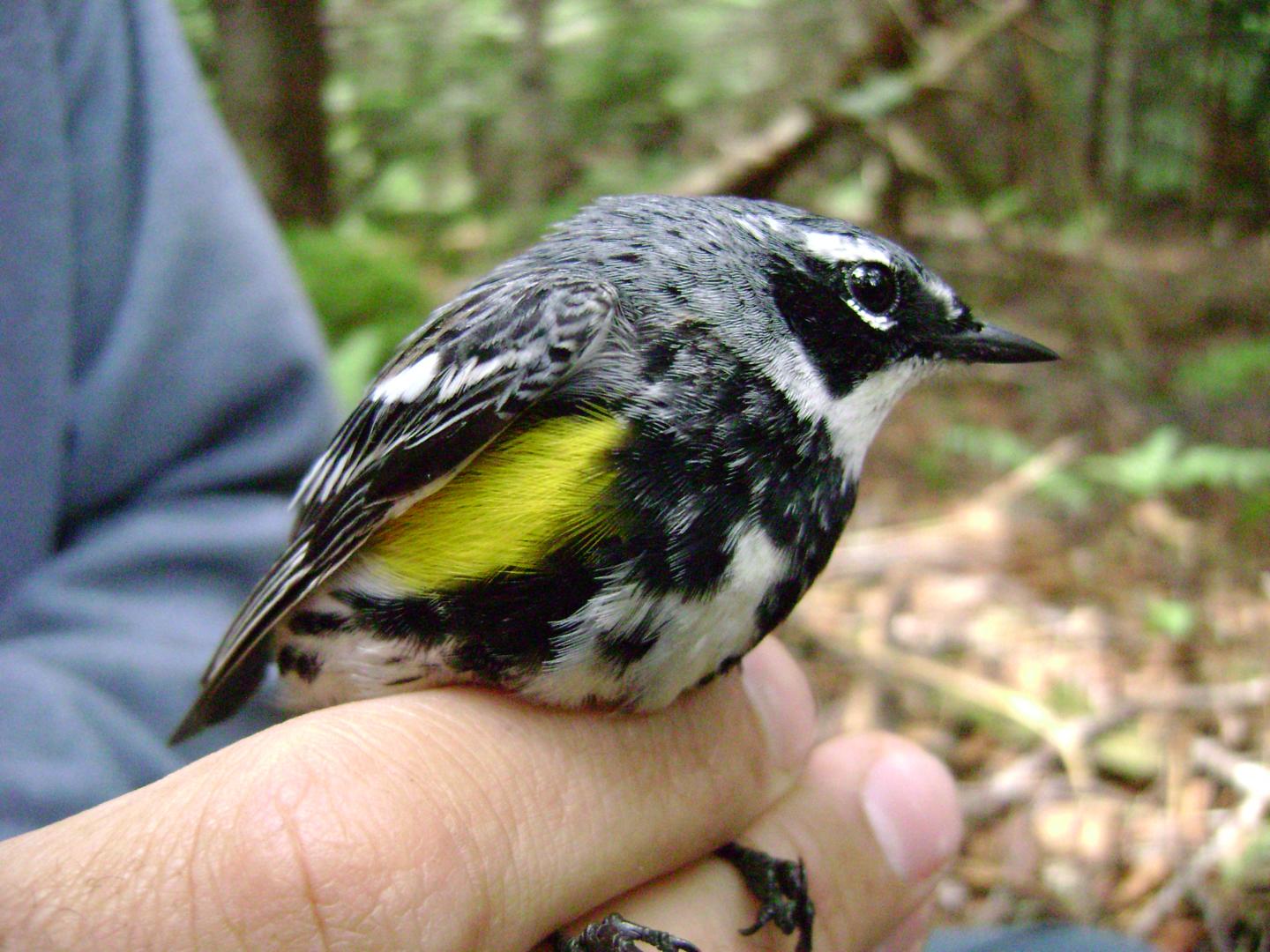
Credit: UMass Amherst
AMHERST, Mass. – Wildlife ecologists who study the effects of climate change assume, with support from several studies, that warming temperatures caused by climate change are forcing animals to move either northward or upslope on mountainsides to stay within their natural climate conditions.
But a new study of lowland and higher-mountain bird species by wildlife ecologists Bill DeLuca and David King at the University of Massachusetts Amherst now reports an unexpected and "unprecedented" inconsistency in such shifts. The majority of the mountain bird community responded against expectation and shifted downslope despite warming trends in the mountains. They say the result "highlights the need for caution when applying conventional expectations to species' responses to climate change."
In their article in the current issue of Journal of Ornithology, DeLuca and King say that although other studies have found species shifting either downslope or toward the equator, the opposite of expectations given the warming climate, theirs is the first to find that the majority of the bird community is responding contrary to these expectations.
DeLuca says of the unexpected shift among many bird species, "This is really important information for mountains in the northeastern U.S. like the White Mountains, Green Mountains and the Adirondacks. It helps to confirm that human activities like climate change, pollution and land management are affecting the distribution of mountain species."
Species shifts up and down mountainsides have been documented around the world but this is the first time that recent elevational shifts of birds have been found in the northeastern United States, they add. It should be noted that in this study, the lowland bird community shifted upslope over the 17-year study period, consistent with expectations given recent warming in the region.
The researchers analyzed 28 bird species including yellow-bellied flycatcher, white-throated sparrow, winter wren, Swainson's thrush, Nashville warbler, yellow-rumped warbler and dark-eyed junco and measured the elevations of their distribution along 42 mountainsides in the White Mountains of New Hampshire from 1993 to 2009.
The authors report that as predicted, the upper elevation boundary of nine out of 16 lowland species showed evidence of shifting upslope an average of 99 meters [about 325 feet] over the study period. But, they add, "contrary to our expectations, nine out of 11 mountain birds shifted their lower boundaries downslope an average of 19 meters [about 62 feet] over the 17-year study period."
A possible explanation for the observation might be changes in forest composition, DeLuca and King suggest. For example, red spruce and paper birch have declined (due in part to acid rain) in the ecotone, the transition between the lower elevation deciduous forest and the higher elevation coniferous forest, and "the void left by the decline of spruce and birch has, in part, been filled by balsam fir." Further, "all of the high-elevation species we found to be shifting downslope are closely associated with balsam fir," meaning these birds may be following suitable habitat.
The warming climate at mid elevations might be driving the march of lowland elevations upslope they say. Based on work from the Mount Washington Observatory, the mid elevations around Mount Washington are warming. "If lowland species are limited by cooler temperatures, this mid-elevation warming might enable them to follow the warmer temps upslope" explains DeLuca.
For this work, trained observers from the White Mountain National Forest surveyed birds using five-minute point counts at fixed survey locations between 740 meters (about 2,440 feet) and 1470 m (4,800 ft.) annually from 1993 to 2000, then in 2003, 2005, 2007, and 2009. For a point count, all birds seen or heard are recorded as being either less than or greater than 50 meters from the observer. Surveys were conducted once per year during the breeding season in June. The observers surveyed a total of 768 locations on 42 separate transects along hiking trails.
Overall, 82 percent, or nine of the 11 high elevation species analyzed showed evidence of shifting downslope, while 10 of 16 or 63 percent of lowland species showed evidence of shifting upslope.
###
This work was supported by the White Mountain National Forest and the U.S. Forest Service Northern Research Station.
Media Contact
Janet Lathrop
[email protected]
413-545-0444
@umassscience
http://www.umass.edu
############
Story Source: Materials provided by Scienmag





